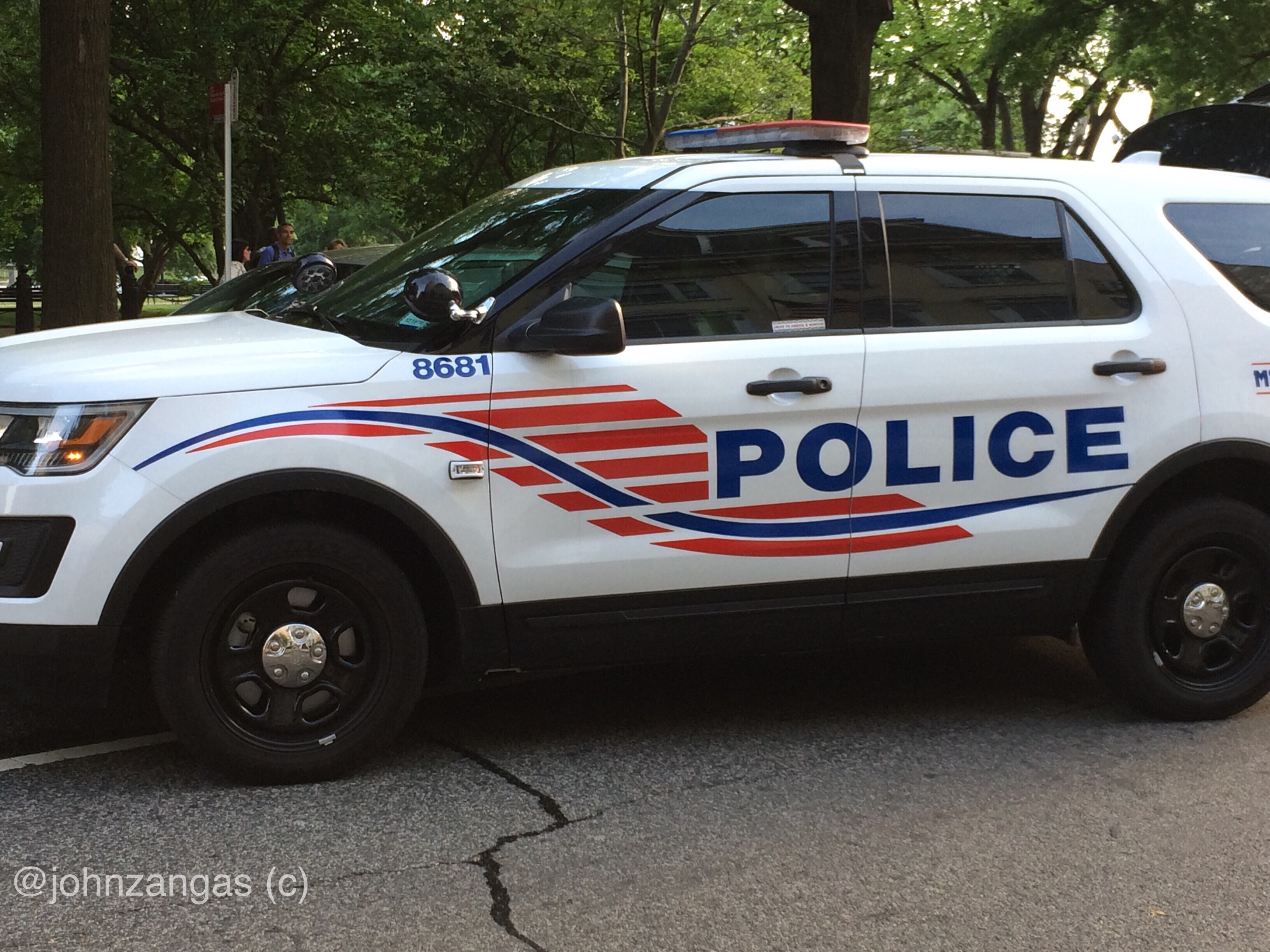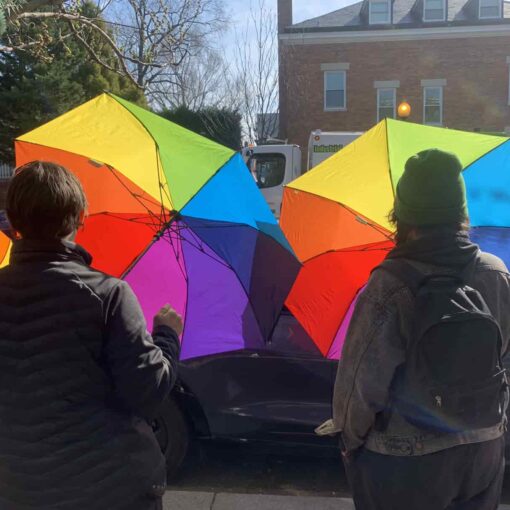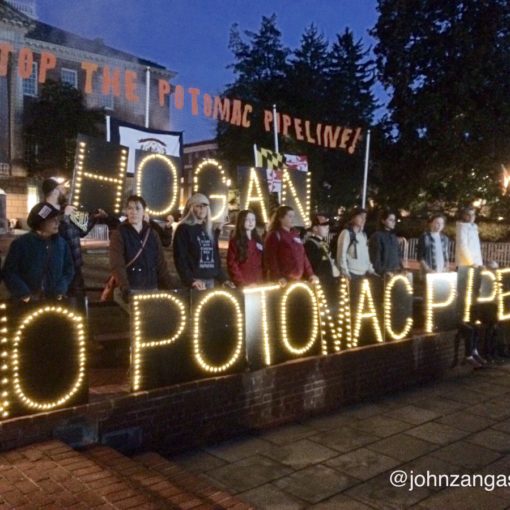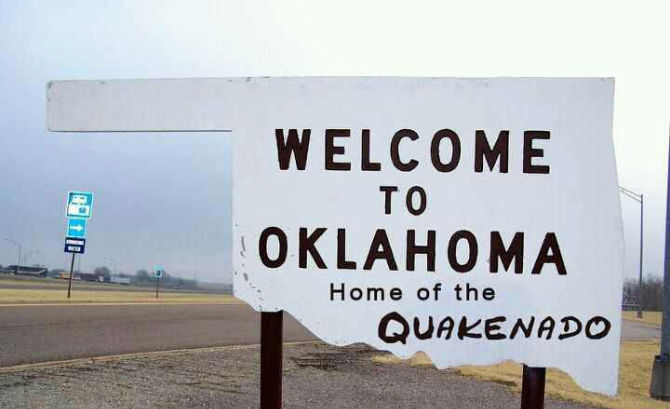Washington DC
Five years ago a small group of Occupy DC activists began a 24 hour protest outside a Bank of America (BoA) at the corner of Vermont & L Streets in downtown Washington DC. The “sleepful protest” wasn’t meant to last long. But it turned into a prolonged three month occupation on the sidewalk as more activists joined.
As word of the protest spread on social media, more protesters came from around the region. It mushroomed into a multi-city protest with sympathy protests outside other Bank of America branches near Wall Street, Los Angeles, and Boston.
Last week the DC Attorney’s office settled a suit brought by Jeff Light, an attorney representing 12 activists who were arrested outside the Bank of America. DC City government will pay about $120,000, for illegally arresting the 12 while they were exercising their first amendment protest rights. Each protester will receive $5000 after a spilt with their attorney, closing a long chapter in the legal fight. The security company at the 1090 Vermont site has already paid a nominal amount ($550 per protester) in another earlier agreement.
Protesters Drew Attention To Massive Banking Fraud On Wall Street
The activists targeted Bank of America because it had foreclosed on tens of thousands of home owners after the 2007-8 market crash triggered the ‘Great Recession‘.
In February 2012, Occupy DC activists had been evicted from McPherson Square, a block away from the bank. The four month occupation of McPherson Square, had also led to a series of many arrests, most of which were defended by Jeff Light. Occupy DC, was an offshoot of Occupy Wall Street, and was accustomed to occupying public space as an irregular protest tactic.
Occupying public space was designed to cause disruption and make area businesses cringe at the idea of being targeted. The occupation tactic was being used to humiliate BoA. It also tested the resources and patience of DC Police.
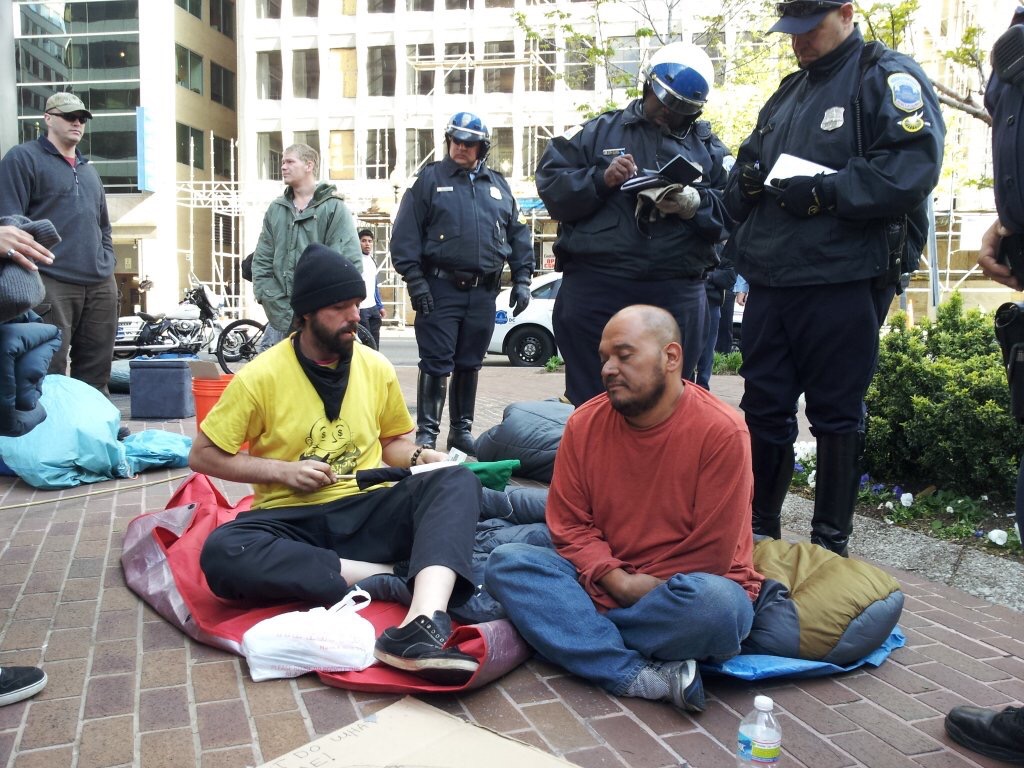
At the heart of protest issue was that no bank official responsible for the massive financial collapse of 2007-8 and subsequent massive foreclosures of 2008-2012, was tried or sentenced to any jail time. All of the banks behind the financial collapse, including BoA, were instead allowed to settle SEC suits with fines for transactions resulting in illegal foreclosures, ususally for much less that the payouts they received for the US Government to keep them afloat. Meanwhile, hundreds of thousands of Americans lost their homes. Further, BoA received $45 billion in tax free bailouts (TARP) in 2008. It was this inequity driving activists to protest BoA, according to Barry Knight, one of those arrested during the protest.
DC Metropolitan Police began arresting protesters on April 12, 2012, several days after they began refusing to leave the sidewalk. Building security repeatedly complained to police. The activists continuously remained on the sidewalk outside BoA, a lessor at the 1090 Vermont Avenue storefront.
The floor to ceiling glass windows put protesters right next to BoA offices, displaying their daily ‘homeless’ routines in view of the BoA officials and customers. Police were constantly parked in the street near the bank monitoring protesters further bringing attention to the spectacle.
The protesters were arrested over a one-week period and charged with incommoding a sidewalk, a low level misdemeanor. Those arrested were released the same day and given summonses, which would likely have likely resulted in small fines and community service.
But they refused to admit guilt. Instead they filed suit against DC City government, the property manager at 1090 Vermont Street, and BoA. The suit pivoted on the fact that the protesters were doing nothing illegal, but refused to go when ordered. They held a 24-7 occupation of the sidewalk, taking up space, laying down cardboard, staying in sleeping bags, eating, sleeping, singing, displaying signs and talking to the public about Wall Street banking practices which led to the Great Recession.
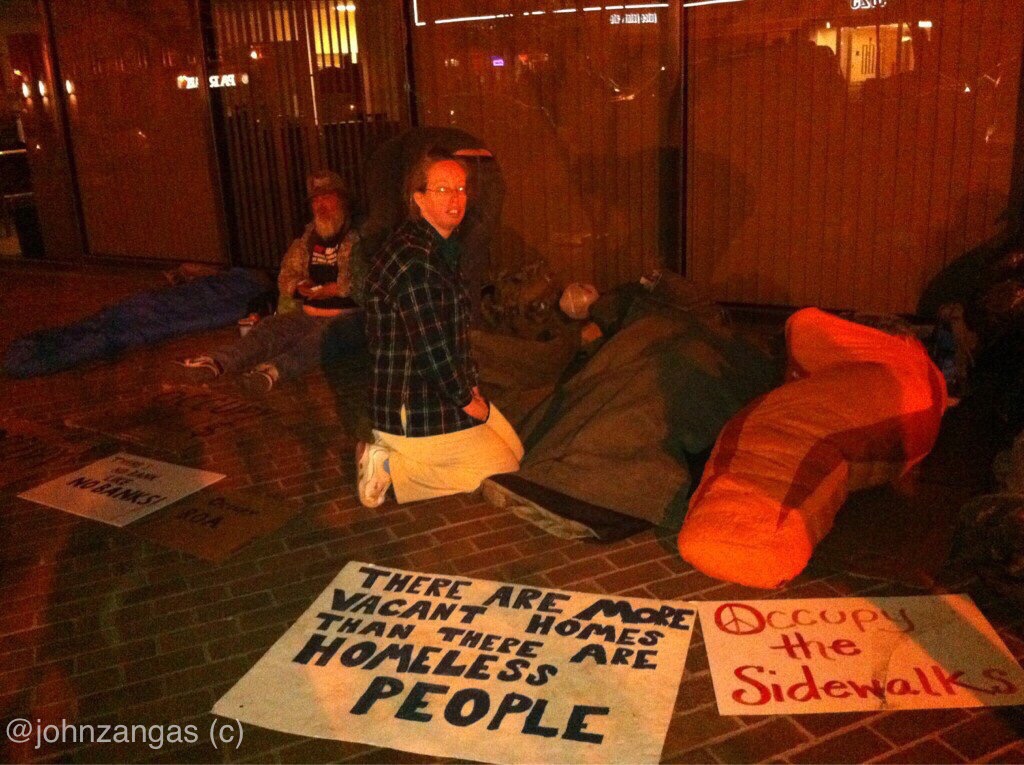
The arrests rose out of growing frustrations between the building managers at 1090 Vermont Street, Bank of America, the protesters, and the DC police.
Knight said that he felt it was a duty to stand up to the banks who essentially got a “get out of jail free card” while many Americans lost their homes, credit worthiness, and in many cases, everything they owned. “There are two sets of laws,” said Knight, “Those for the banks and billionaire class and those laws for the rest of us.”
Five years later Knight still has plenty criticism for BoA and its foreclosure procedures. “They foreclosed on People when they didn’t even hold the mortgages on the debt,” he said.
Protesters Used Irregular Protest Tactics
What formed the backbone of the protest was the tenacity of the protesters who refused to leave when told to go by security and police. And despite being arrested by police, they kept returning to the protest immediately after their release.
“We supported each other,” said Rudy Roberts, another protester who was arrested on April 13, but also immediately returned to his place on the sidewalk to join his comrades after being released.
“The police didn’t know what to charge us with because we weren’t breaking any laws,” said Roberts. Roberts related that police didn’t know what charges to file once they was taken in for booking so he told police the only thing we did was stay on the sidewalk. “So they charged us with incommoding a sidewalk,” said Roberts.
“The sidewalk is 30 feet wide between the Bank of America and the street so there was no possible way we could have been blocking it,” said Knight.
To keep the protest fresh activists devised a number of strategies. They painted snarky signs and laid them on the sidewalk, handed out flyers, and reached out to the public for support. The public made donations and brought food in support. Even one of the D.C. Police officers assigned to monitor the protesters brought coffee and doughnuts in the mornings for the protesters. But he was later reassigned to other duties purportedly because of his developing closeness to the protesters.
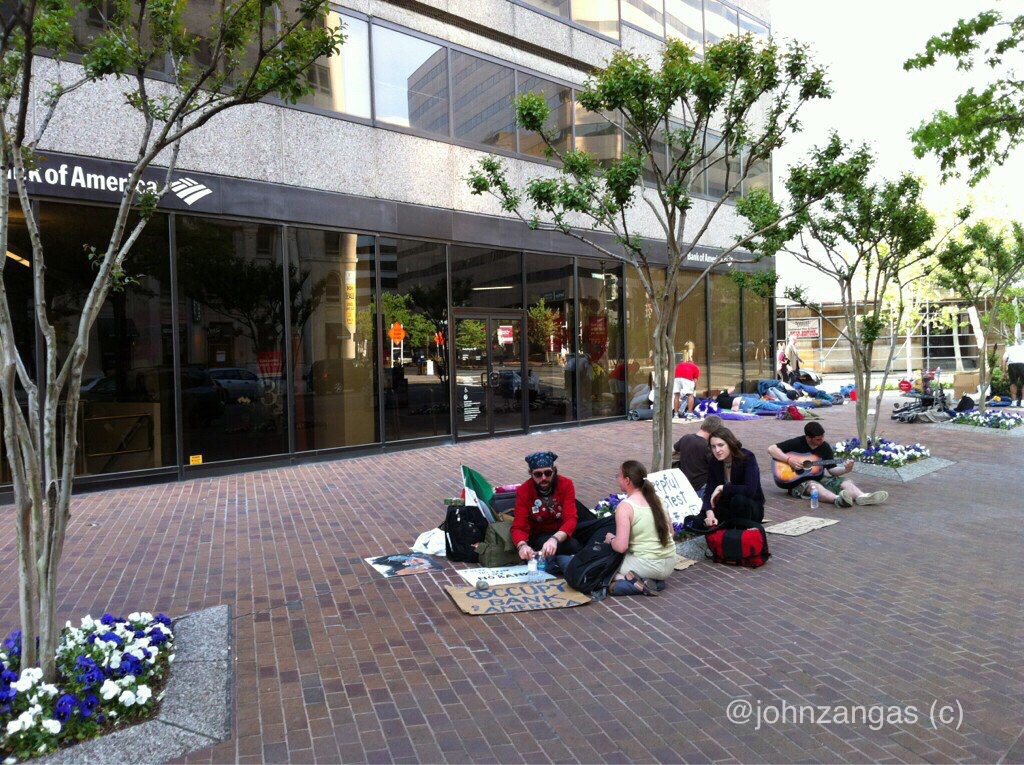
Protesters also wrote and played songs on their guitars, wrote and recited parodies for “bedtime stories” about the bank crisis. One such story was a rip-off of Thomas Nast’s “It Was The Night Before Christmas”, reworded to “It Was the Night Before The Banks Failed”. They held pajama marches on Vermont Avenue and prepared and served food on the sidewalk and kept watch at night.
When it rained they put plastic tarps over their sleeping bags. Police had rejected an attempt they made to put up tents on the sidewalk. When police removed a tent put up by Haris Ntabkos, he replaced it with a large picture he drew of a tent on a 5′ x 4′ piece of cardboard in defiance of police. He was also the first protester arrested.
Kelly Canavan, one of the protesters who stayed on the sidewalk several nights, but was not arrested, credited the protesters for their “wit and “high spirits” for lasting as long as they did. “[They were] impressive for their remarkable hospitality considering that they had so little to begin with,” said Canavan.
“They were inspirational, having given up every luxury in order to do the grinding work of holding Bank of America accountable for what they were doing.” she said.
DC Police Have Long History Of First Amendment Rights Violations
DC City government has already paid out big settlements in past high profile police incidents for arrests violating first amendment rights. In August 2000 nearly 700 protesters were arrested near 20th & K Streets during NATO protests. The resultant suit netted $18,000 per person for a total of $12.6 million.
In 2008 the District paid out big again, to the tune of $8.25 million after mass arresting 400 protesters kettled in Pershing Park during World Bank protests in 2002.
Again in 2017 MPD mass arrested over 200 during Inauguration protests, including journalists and photographers. Another class action lawsuit is pending in that case.
“People came from all over to join Sleepful Protest — to be supportive and lend a hand, but also to grab a little piece of its irreverent magic,” said Canavan.

